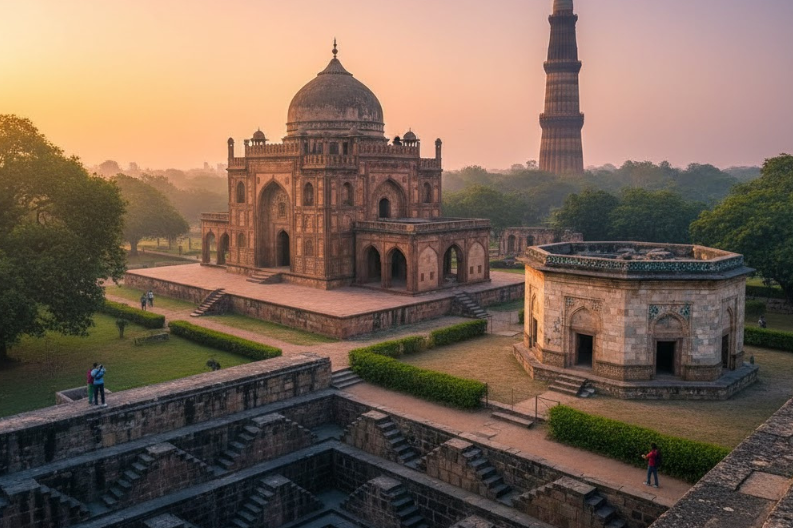The Iron Pillar of Delhi looks just like any other iron structure. However, there’s a lot more to it. We all know that over time, everything made up of iron catches rust, especially when exposed to air and moisture.
In this regard, Delhi’s Iron Pillar is different. It is around 16 centuries old but has refused to rust ever since! The pillar was built in an era when there wasn’t technology as advanced as it is today. Yet, it amazes scientists and technology enthusiasts across the world with its unique features.
Today, we will discuss in detail Delhi’s Iron Pillar. Also, we will help you know everything you need to know before visiting that place so that you can complete an educational trip.
About the Iron Pillar of Delhi
The Mehrauli Iron Pillar is one of Delhi’s most amazing and visited tourist spots. It is of great historical, architectural, and scientific importance for people in India and the world. The structure stands 7.21 meters tall in the Qutb complex at Delhi’s Mehrauli village. It was built and erected under the Indian ruler Chandragupta II. The tower is 23 feet 8 inches long and weighs over 6 tonnes.
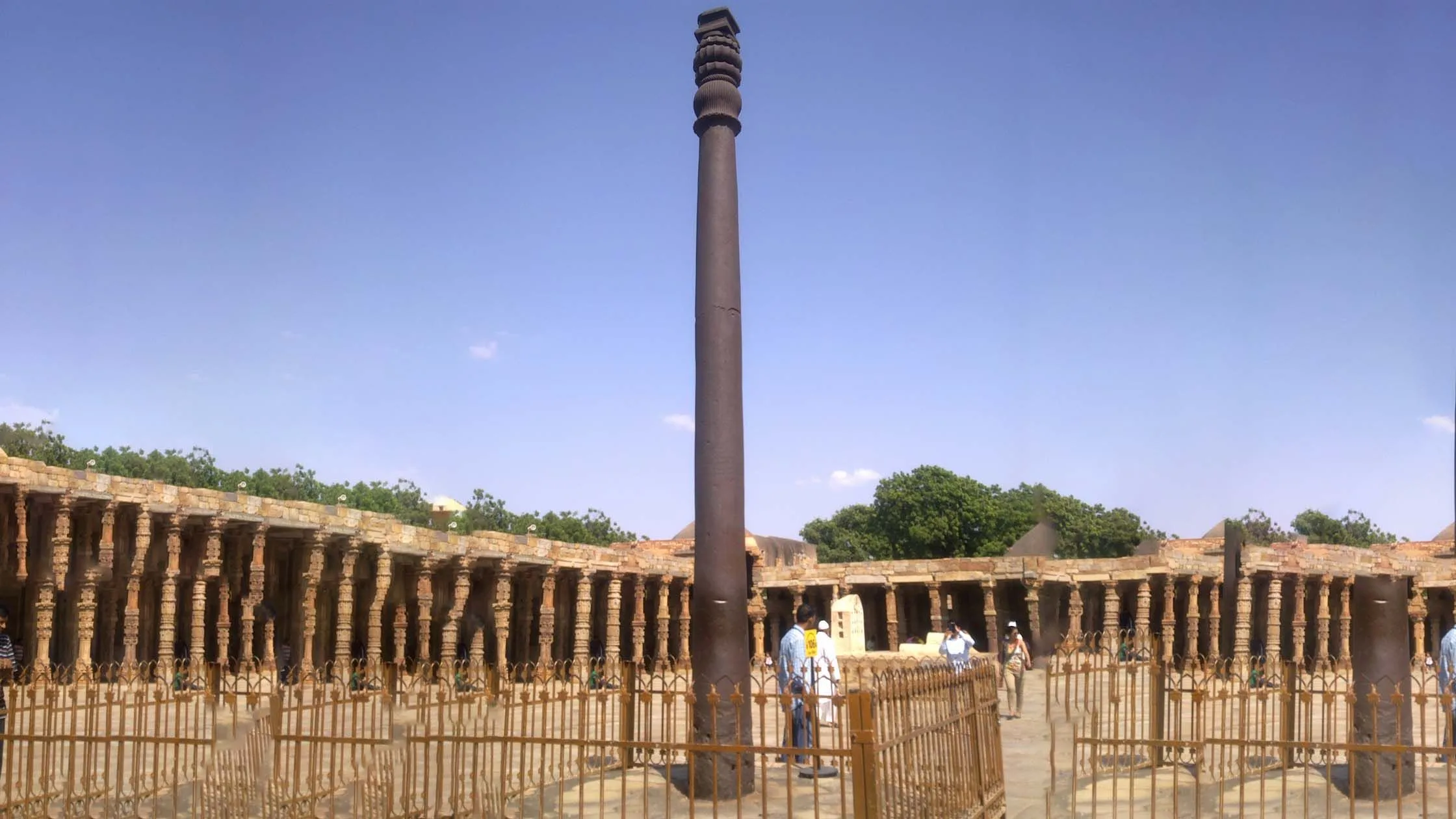
It is believed that the pillar was not originally installed in this place. It was initially built outside the Udaygiri Caves and was moved in the 11th century to its current location. The most astonishing part about this pillar is that it was made with unique rust-resistant metals, because of which it hasn’t shown any signs of corrosion to date.
The Iron Pillar is one of the many inscriptions of the Gupta empire. On the pillar, there have been many inscriptions engraved dating back to the Gupta empire. The inscriptions are of different dates and talk about the multiple emperors of the empire. The oldest one of them, however, is the inscription of King Chandra (Chandragupta), who reigned from 375-415 AD.
Delhi’s Iron Pillar is a metallurgical wonder which highlights the level of skill and knowledge that India’s ancient ironsmiths possessed. If it had been a normal pillar, it would have become a pile of rust a long time ago. But here it is- a magnificent symbol of ancient intelligence that continues to baffle the viewers to date.
History of the Pillar
The inscriptions on the pillar are in Sanskrit, according to which this pillar celebrates the victories of King Chandra. It was also created as a symbol of devotion to the Hindu god Vishnu. While there were two kings in the Gupta empire who can be referred to as Chandra, this pillar probably speaks of the first one named Chandragupta.
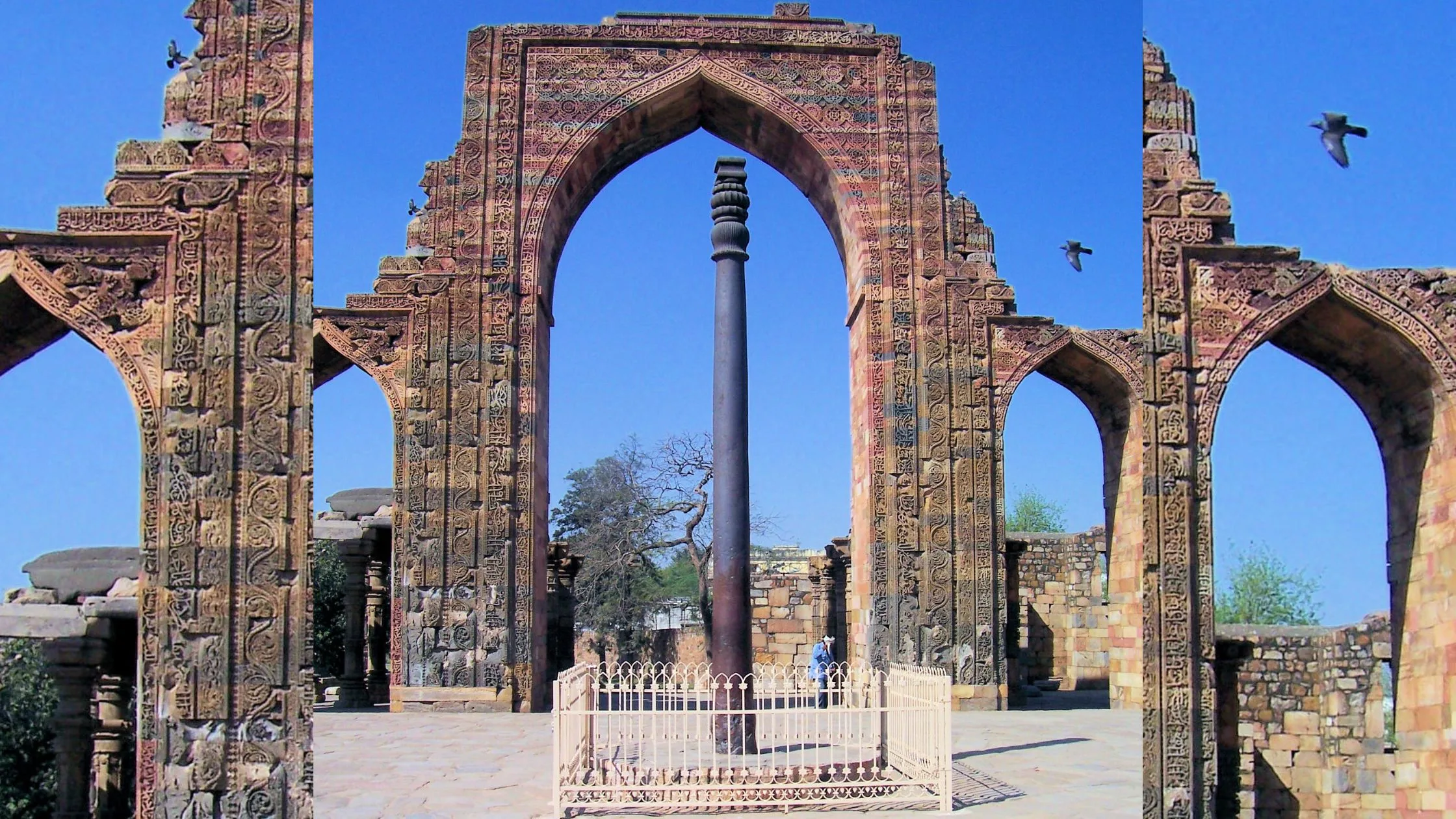
The pillar was originally constructed in present-day Madhya Pradesh, which was earlier known as Vidisha. Some people believe that Tomar Rajput king Anangapal brought this pillar to Delhi when he founded the city in the 11th century. He wanted to add beauty to his capital city Lal Kot, where he also built the Vishnu temple.
However, others believe that after Sultan Iltutmush conquered Vidisha (where the pillar was originally installed), he brought it to Delhi as a trophy of his victory.
About Other Such Pillars
There are many other pillars that the Mauryan emperors built originally. Prominently, the pillars were built under Mauryan Emperor Ashoka, who reigned large parts of India and the neighboring countries in BCE 269-232. Some of the famous pillars include one in Dhar, Madhya Pradesh, and another in Kodachadri, Karnataka.
These were inspired by the victory columns, which were found in Greece, Rome, and Ethiopia. However, over time, the rulers of the Gupta empire and the Mughal emperors started re-using these pillars. They started writing their own inscriptions on these pre-installed pillars.
However, they also got built their own pillars with inscriptions later. The famous Qutub Minar is also one such pillar, which was built as a symbol of victory of the Slave dynasty. The pillars of Jam and Ghor in Afghanistan and the rising tower in Chittor in Rajasthan are other examples of such architecture. Thus, we can say that the idea and art of making pillars traveled from one part of Asia to another.
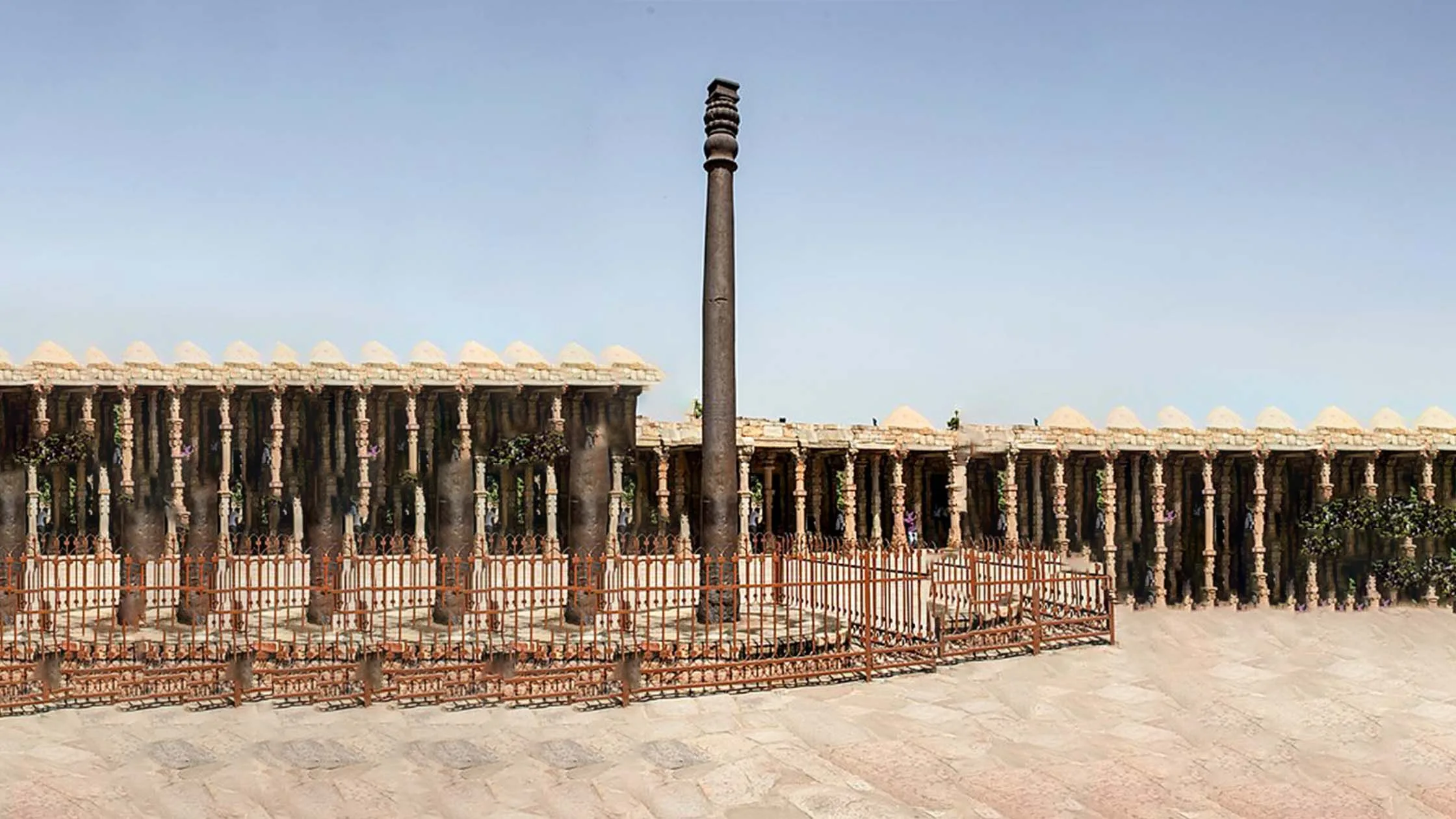
Why Doesn’t the Pillar Rust?
Archaeologists and historians from all over the world have always tried to crack the code behind this unique piece of architecture. Experiments and studies on the pillar have been going on since the time of British colonization. As a result, scientists discovered some possible reasons for this.
Historians believe that the Iron Pillar of Delhi was made through “forge welding.” This means that the material used in building the pillar was not only iron but included batches of slag, which is a byproduct of the smelting process. Also, the ironsmiths did not use lime in the process of smelting. As a result, the phosphorus present in the iron ore wasn’t removed.
Consequently, the phosphorous present in it created a shield or a passive protective layer, which deflected corrosion. This anti-corrosive layer, formed by the impurities that were not removed from the iron ore, is the reason why corrosion and rust could not affect this pillar.
We do not yet know if this was a process that took place naturally or if it was the idea of the ironsmiths of that time. However, it gave birth to a scientific wonder that is a prominent part of Delhi’s architecture and tourism today!
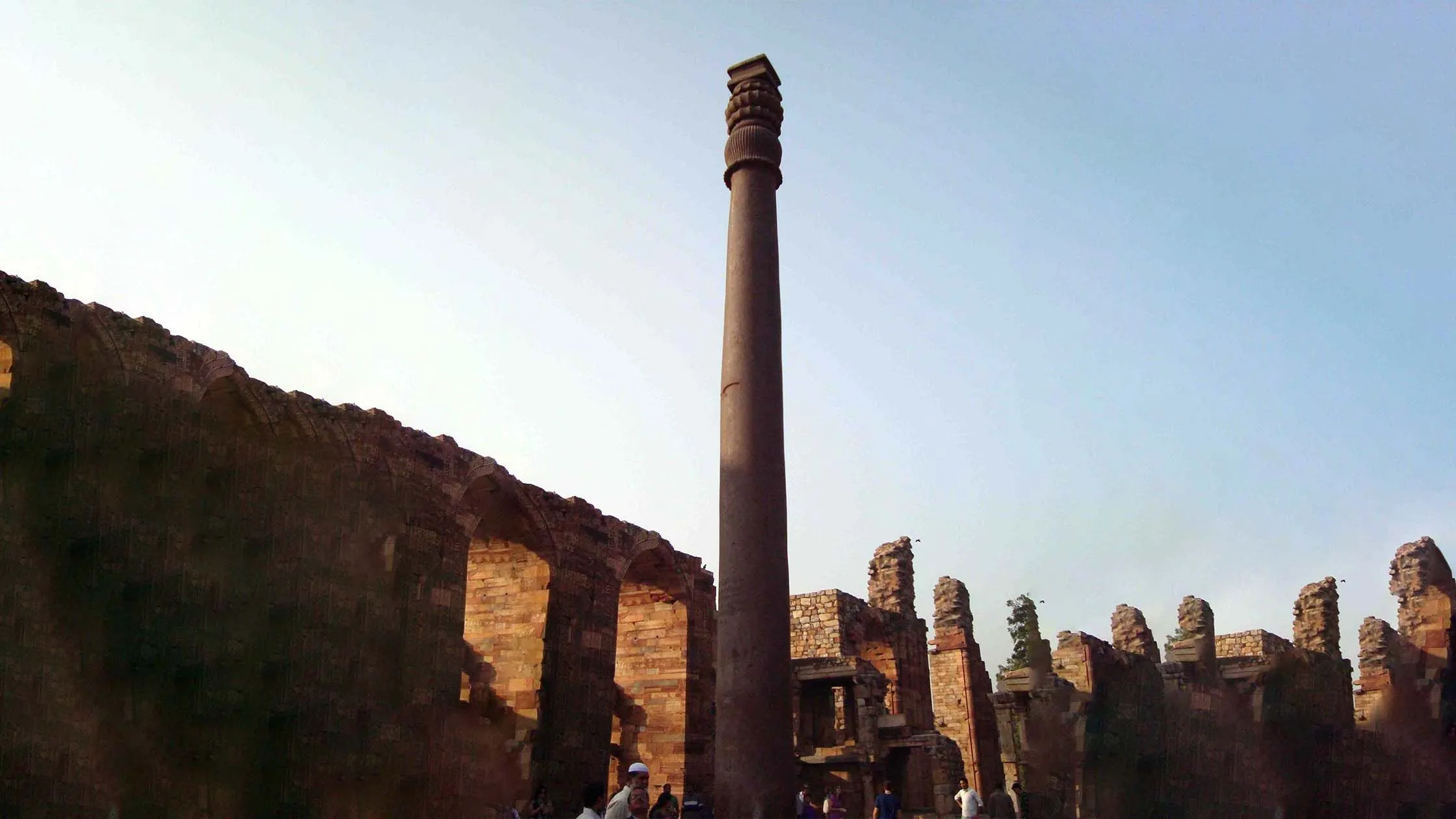
Reaching Delhi’s Iron Pillar
When in Delhi, you must visit the Qutub Minar Complex in Mehrauli to complete your trip. The Iron Pillar of Delhi is a part of the complex, which is also known as Lal Kot. You can reach the destination easily through public transport. Thanks to the great metro connectivity in the region, you can also reach easily through the metro. All you need to do is board a train to the Qutub Minar Metro Station on Yellow Line.
The complex is open for visitors from 1 in the morning to 9 in the evening. The entry fee for Indian tourists is Rs.35, while that for international tourists is Rs. 500. However, the visit to Mehrauli is not only about the Iron Pillar. When you visit Mehrauli, you must also check out the following places-
- Qutub Minar
- Tomb of Iltutmish
- Tomb of Balban
- Rajon Ki Baoli
- Alai Darwaza
- Jamali Kamali Tomb
- The Garden of Five Senses
- Chattarpur Temple.
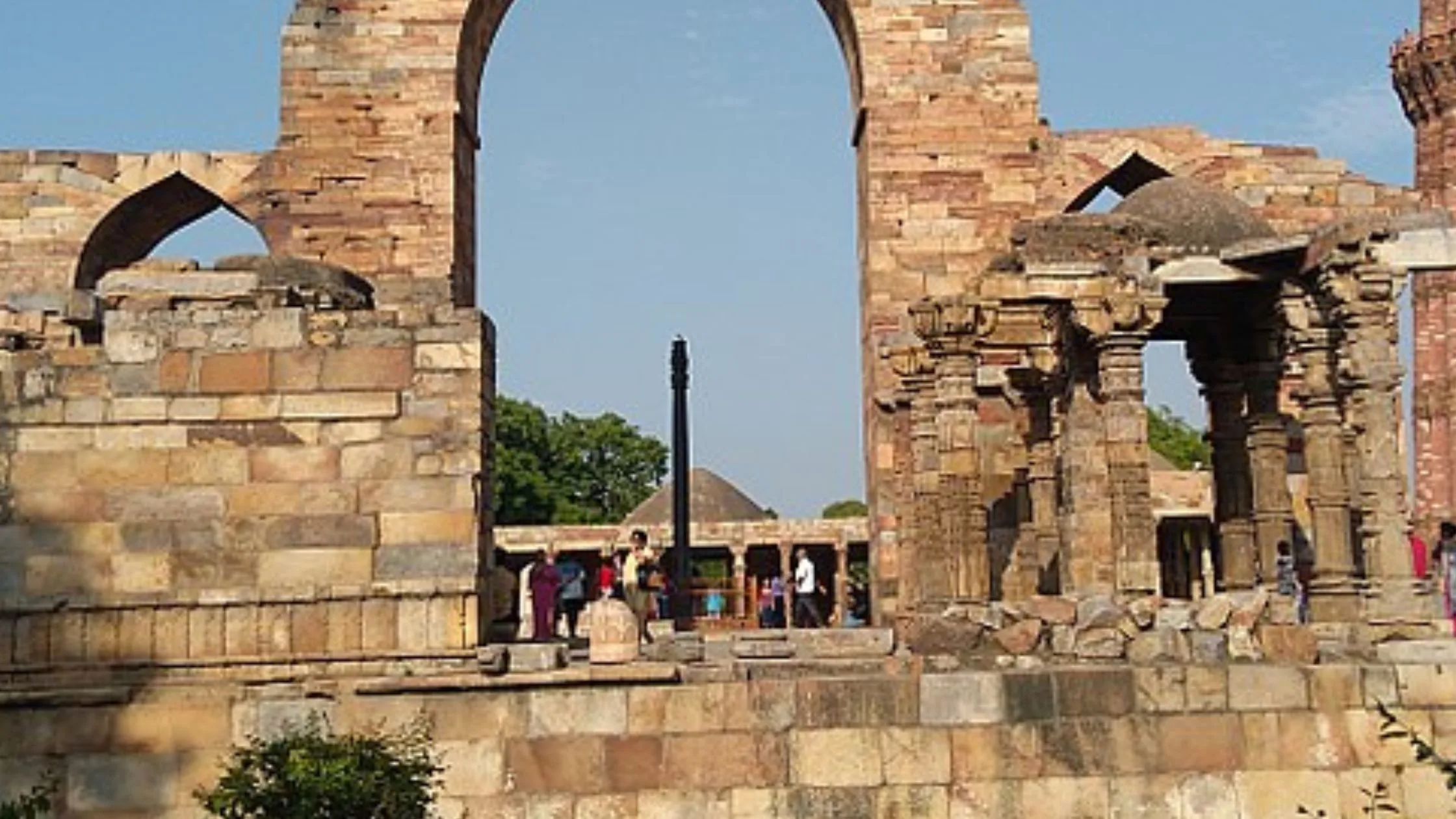
Final Words
On carefully inspecting the pillar, you might find out some signs of destruction on it. In this regard, historians believe that some kings wanted to destroy the pillar as it was the symbol of victory for the Indian rulers. However, people also believed that the pillar was so difficult to break that foreign kings started wondering whether there was some kind of treasure or jewels embedded within the pillar!
While the tomb might look like any other normal iron pillar, its composition, and inscriptions are what make it unique. If you are interested in history, you might be able to translate and understand what the pillar and its inscriptions have to say about various kings. Also, its architecture and composition gave builders across the world different ideas to evade corrosion from their architectural works.
The pillar is 1600 years old, and despite so many attempts by various rulers to destroy it, it stands tall even today. It has resisted heavy rains, earthquakes, and all other kinds of natural phenomena, but it resents to even bend. So this is the magnificence of this age-old structure!


